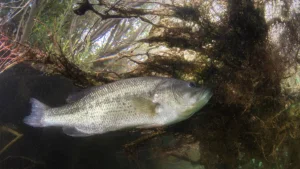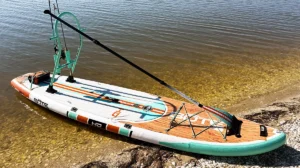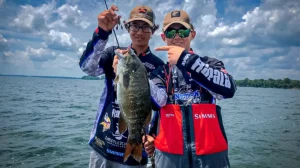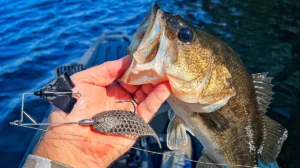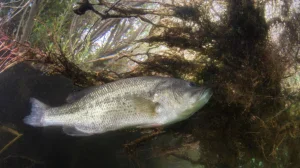Alright, pump the brakes. I know this topic is going to be a little controversial. I also know this goes against the grain of everything Brett Hite preaches about fishing a ChatterBait, so what gives me the right to question the all-time great on the technique he’s built a career on?
I’m not. Hite is extremely dialed in with his set up and there are anglers out there who can adopt his method and never skip a beat. But I was raised on something different and when I tried a similar setup to what Hite uses, it felt about as foreign to me as trying to order McDonald’s in German. Weird example, yes. But that’s just what popped into my head.
I believe there are some anglers out there who would feel more comfortable with the setup that I use most of the time, which consists of braided line and a medium-heavy rod compared to what Hite and many other anglers go with: a fiberglass rod with a parabolic bend and fluorocarbon line. Again, I’m not saying that’s wrong. Hite and others have won a ton of money on something similar.
But that’s not the set up I use. Here’s why.
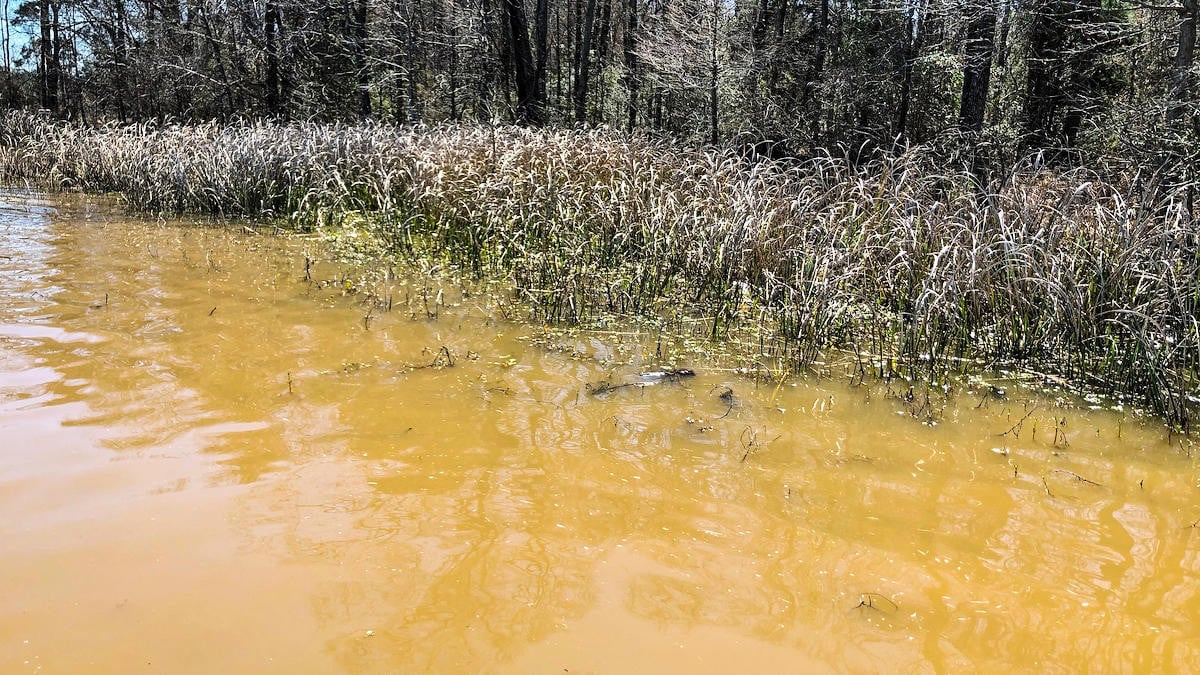
What I was raised on
Before the ChatterBait was ever even invented, my dad had me in a boat chucking spinnerbaits, buzzbaits and swim jigs in the muddiest water he could find. I was raised fishing in water that most folks to this day won’t even stop and make a cast in. Winter, spring, summer and fall, year-round we’d seek out the muddiest water and had a lot of success doing it.
My dad became a big fan of braided line in fishing this way. Back in the 90s when braid kind of really started taking hold again and before fluorocarbon was even a thing, dad started to replace the monofilament he was using with Fenwick Iron Thread. It was the first braid he ever bought.
An interesting side note is that really big, coarse braid was actually popular for bass fishing and other types of freshwater fishing way back in the day with little steel rods. We still have a few of them, none that we ever used ourselves, but antiques passed down or procured over the years that still have the original braid on them. Then monofilament came along and it wasn’t until later when the technology that went into braiding line made some big advancements, that braid became mainstream in bass fishing again.
Anyway, that’s how I started out. Fishing nearly everything on braided line. So when I first got my hands on a ChatterBait, I tied it on my 7-foot medium-heavy spinnerbait rod which had 40-pound braid on it and went to tossing it in the mud. It felt natural, I caught lots of fish, I didn’t lose many and the biggest reason I went with this setup was because I didn’t know any different. There was no blueprint at the time for what Brett Hite was using. Pro anglers played things a little closer to the vest back then and the information that did come out was delayed more in the form of magazines than so readily available with a keyboard and a Google search.
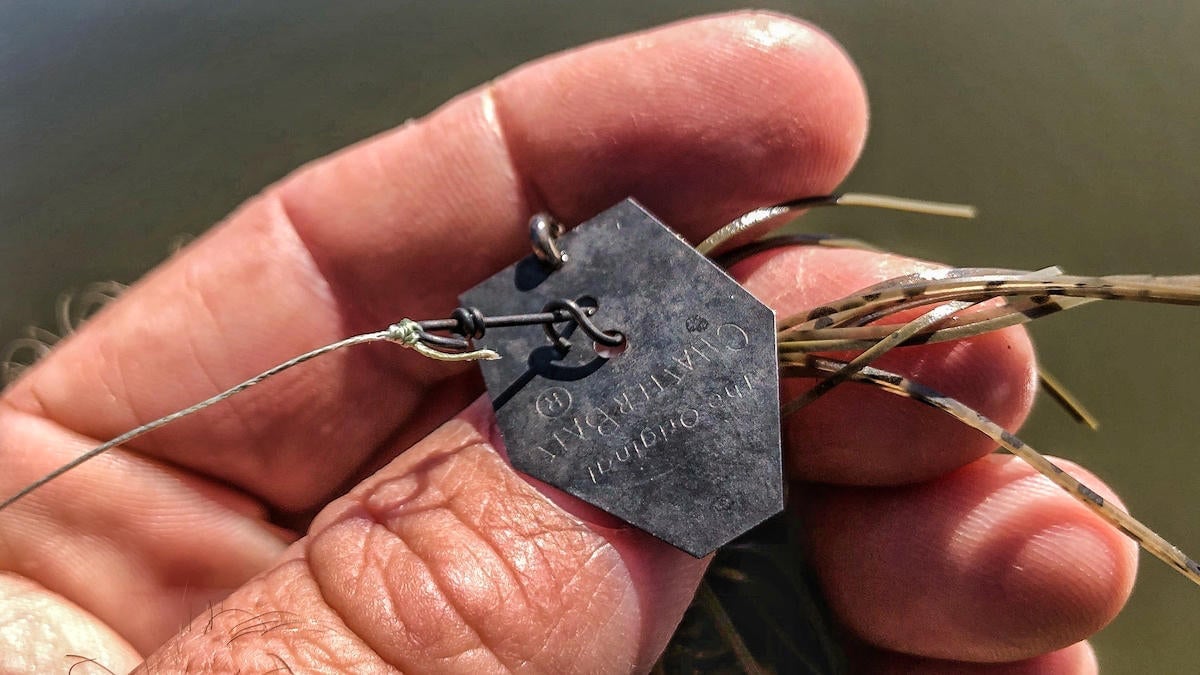
Why I stuck with braid
So that’s why I started with braided line on a vibrating jig… but why did I stick with it? Well for me and the way I like to fish, there was no real reason to move to fluorocarbon line. Now, I will admit that I throw a ChatterBait on fluorocarbon every now and then in really clear, open-water scenarios. But I primarily fish it in near-zero visibility water and around some extremely abrasive cover like rocks, stumps and logs. I’ve stuck several fish over the years on a ChatterBait in the middle of a laydown that I truly don’t believe I would have been able to land with fluorocarbon.
I’d say the same for dense vegetation, even in clear water. Later in life as I started to fish the then-EverStart series (present-day Toyota Series), I began fishing lakes like Okeechobee, Guntersville and Seminole where I’d target bass with a ChatterBait around dense vegetation like hydrilla, milfoil and coontail. And I had a good bit of success doing it, including an 11th place finish in 2013 on Okeechobee.
The braid was critical in pulling those fish that from the dense vegetation for me that week. Even in the clearer water, I didn’t really worry about the visibility of the braided line because it honestly just blends in with the vegetation in my opinion. It’s hard for me to believe a fish can’t see 65-pound braid when I’m punching a mat and working a bait super slow but if I turn 2 feet to the left and reel a ChatterBait through the scattered vegetation on 40-pound braid it’s suddenly a deal breaker.
But, in the defense of why most anglers choose fluorocarbon, it’s not typically the preferred line because it’s less visible. Most anglers choose the parabolic glass rod and fluorocarbon because they believe it helps them catch more fish and more aptly put, miss fewer fish. There’s a little bit of dullness in the sensitivity of that setup and you’re less likely to jump the gun when a fish swipes at your bait because you won’t feel the miss.
Instead, you kind of keep fishing until a lot of times the fish makes another swipe at it and then the bait will often just feel like it has stopped working. Then you have to deliver a big, sweeping hookset and burn the reel to catch up with the fish. This is just all so foreign to me due to the history I have with braided line. So, let’s look at the reasons I prefer braid for the actual technique of fishing a ChatterBait.
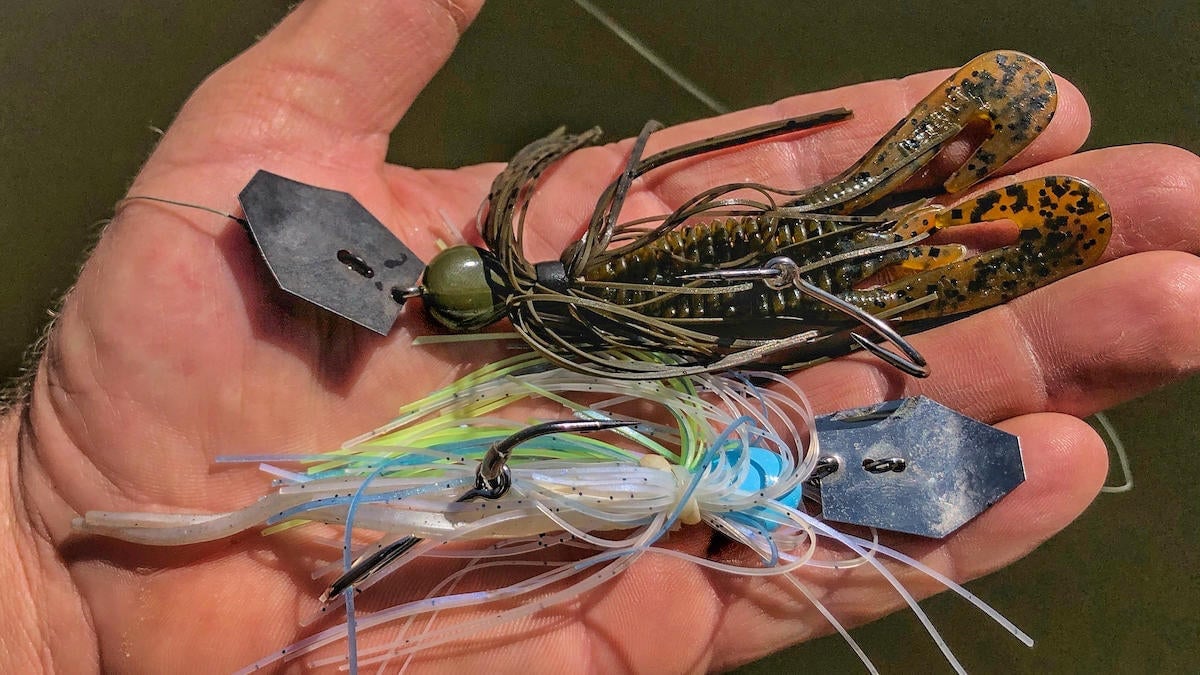
The benefits of braid for fishing a ChatterBait
The thing I like most about fishing a bait on braided line is that I’m able to keep constant contact with the bait. The sensitivity of the braid allows me to know what my ChatterBait is doing at all times. So if I’m fishing around hydrilla and I get a little piece of grass on it, I don’t reel the bait 5 feet before I realize it. I know immediately that the blade has stopped vibrating and a quick twitch usually gets it back going. The lack of stretch in the line means I don’t have to do a lot of snatching and jerking like I would if I had the bait on fluorocarbon, which doesn’t have nearly the stretch that monofilament does but certainly stretches more than braid.
Vibrating jigs are also a tough bait for most anglers to fish around wood because they tend to hang up a lot. The bait will either roll into cover or at times anglers will mistake a couple of limbs in quick succession for a bite and snatch the bait right into the cover. With the sensitivity of braid and the constant contact, I’m able to worm the bait through the gnarliest laydowns while making sure I keep it upright and being able to decipher between a bite and a piece of cover.
Now I will say, if you’re not familiar with fishing braided line, that sensitivity can be an impairment more than an asset. You’re likely to mistake a lot of those run-ins with cover for bites and hang up often with unwarranted hook sets. That’s why I stress that my setup isn’t right for everyone and that you may very well be better off with something like what Hite uses. But if you are familiar with braid, the sensitivity is extremely beneficial.
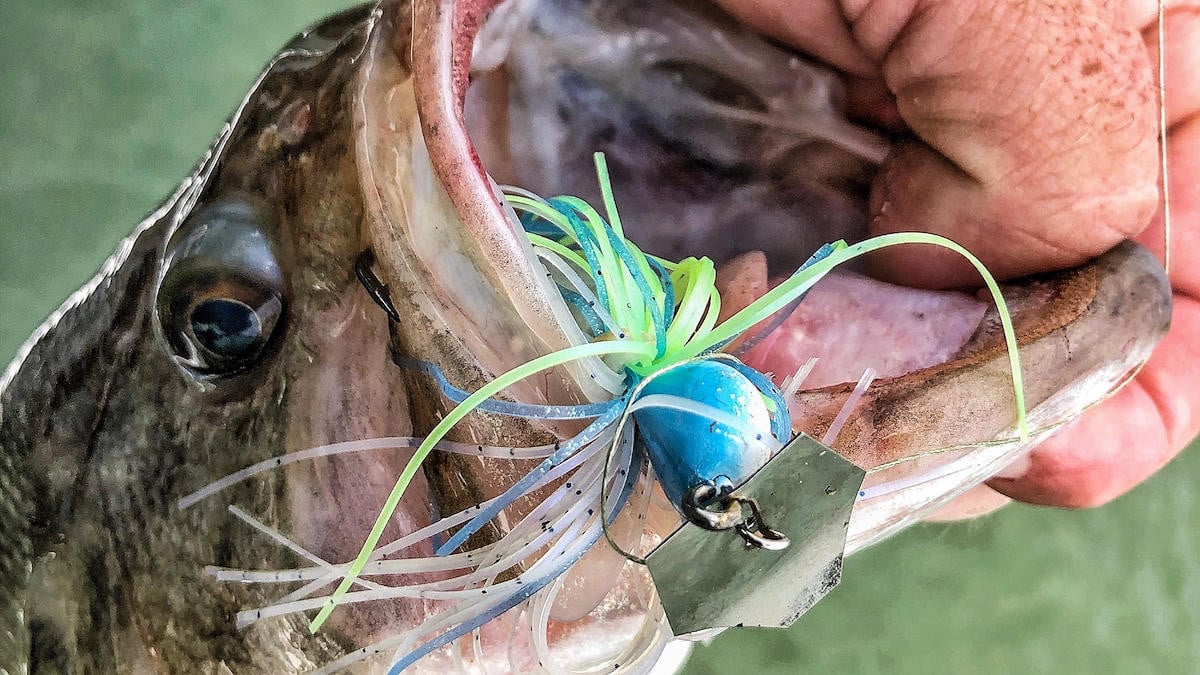
It’s a comfort thing
It really comes down to comfort and adaptability. In defense of all those who think I’m crazy for fishing a ChatterBait on braided line, I also fish a shaky head and wacky rig on a baitcaster, so I’m a bit of a rare breed. But I fish a wacky rig on a baitcaster because I was raised on power fishing gear. If I try to skip a dock with a spinning reel, I’ll smack the dock 9 times out of 10 and best case scenario get the bait to go 5 feet back in there on that 10th try. I can skip a wacky rig on a baitcaster back into a place 20 feet on the first shot. Sure, I could spend the next 6 months really working at getting better at skipping with a spinning rod and try to completely reprogram my muscles, but why would I?
I think we all too often get caught up watching these guys who fish for a living and then try to mimic every little thing they do. But you don’t think about the months and years it takes for them to get so proficient at what they do. Then we try to take our one weekend a month or two weeks vacation each year and try to scrap what we know to adopt what they do and it’s just not worthwhile or practical.
The pros are likely less than 0.0001% of anglers and the best at what they do. Most of us will never be that good at it. Sure, we can and should learn as much as is practical from them but my mentality on certain things is simple: If it ain’t broke, don’t fix it.
The braided line deal serves me well on a ChatterBait. I could spend months trying to recondition myself to fish a different set up, but why? I’m catching fish and in-tune with what I do and how I do it. If that’s how you feel about flouro and a glass rod, stick with it. If braid is your thing, give it a shot on a ChatterBait.
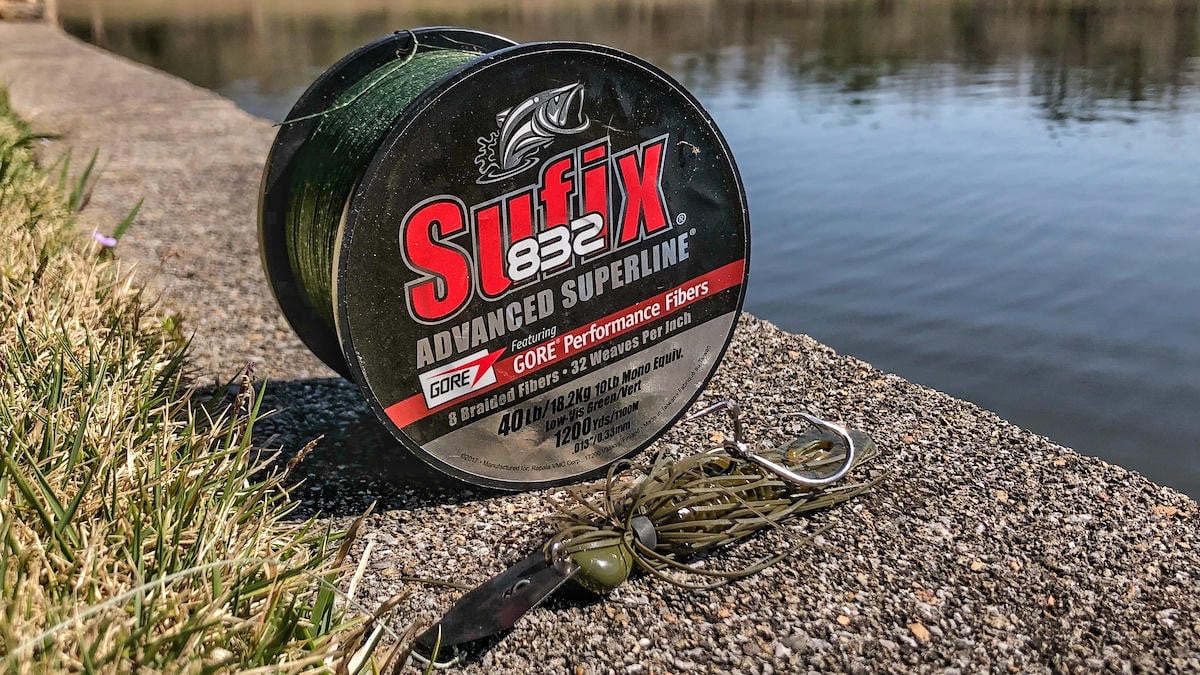
My exact gear
So what does my set up look like exactly? I use 40-pound Sufix 832 Braid paired with a 7.5:1 Lew’s Super Duty LFS Casting Reel if I’m fishing fairly shallow. I don’t have anything against moving to a slower reel and do move to something like a 6.8:1 in the Super Duty if I’m wanting to slow roll the bait in more than 5 feet of water on the rare occasion. But usually, I’m fishing the bait in 1 to 5 feet and I can slow the 7.5:1 down enough for the presentation. I like the responsiveness of the faster reel when I do get a bite and need to get the fish out of the cover quickly.
I pair the Super Duty and 832 Braid with one of two rods: A 7-foot medium-heavy Fitzgerald Fishing Vursa or a 7-foot, 3-inch medium-heavy Vursa. If I’m planning to predominately fish around docks and bushes where I’ll need to skip the bait more, I like the 7-footer a bit more because it clears the water a little easier on the cast. If I plan to be fishing more around heavier cover, be it stumps, laydowns or vegetation, I prefer the slightly longer and stronger rod because I’m able to guide the bait back through limbs a little better on the retrieve and I have a little more backbone to wrestle the fish out of cover.
On the rare occasion I’m fishing something like a super-shallow flat of vegetation on a lake like Okeechobee or Guntersville, I’ll go with a 7-foot, 8-inch medium-heavy Vursa and 50- or even 65-pound Sufix 832 Braid because it allows me to make bomb casts and wrestle fish in through that dense cover. But if you do something like that, you’ll definitely want to go with a vibrating jig with a super reliable line tie like the Z-Man ChatterBait Elite or Z-Man ChatterBait Custom. These are the two vibrating jigs I use the most because I can rely on the line ties not to fail, even with braid. The line tie is a weak point on some vibrating jigs and can break your heart when trying to pull a 7-pounder 80 feet through a pasture of hydrilla in a foot of water.
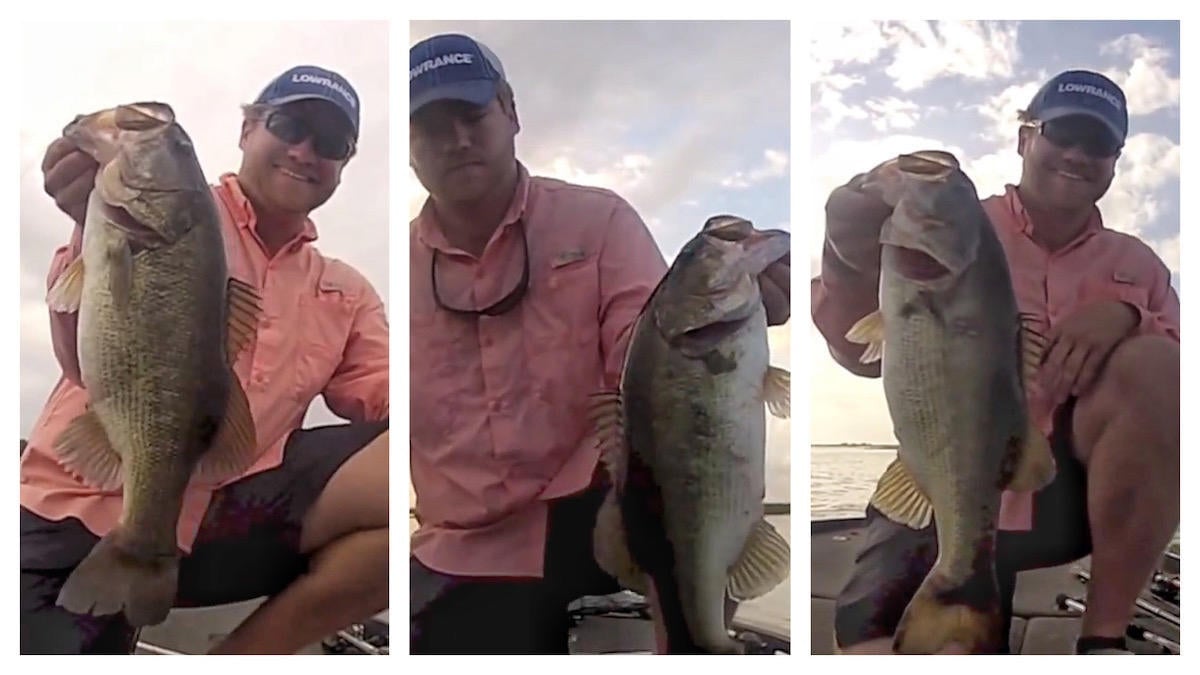
Final thoughts
The goal for the majority of us in fishing is to make the most of our time on the water. Catch fish and have fun. For me, the best way to do that with a vibrating jig is braid. For others, it won’t be. For you, it might. It’s definitely something I think all anglers should at least try. If nothing else, it will reassure you that you have already found the right set up for you and your style of fishing. But you might find that it opens up whole new doors to where you can fish a bladed jig.
Remember, if you do try braid on a vibrating jig, it is very sensitive. You will feel every little thing you bump into and even things things that you don’t make direct contact with. I have felt a fish swipe a ChatterBait on braid before but not actually make contact with it and tossed right back in and caught it on the next cast. The sensitivity is second to none. But it will take a little getting used to at first and you’ll be prone to setting the hook on limbs and snatching the bait away from a fish on the initial pass.
But if you’re like me, you’ll find that braided line is the perfect accessory to a ChatterBait. For me, it increases the bait’s effective range, sensitivity, skipability, castability and overall effectiveness in heavy-cover situations. What I gain with braid vastly outweighs what I would give up by switching to fluoro. So there you have it, that’s why I fish a ChatterBait on braid and why I think you should give it a shot.



